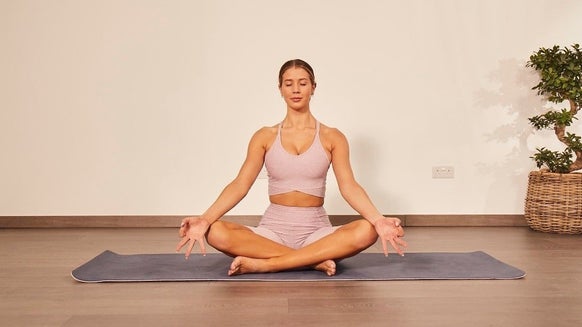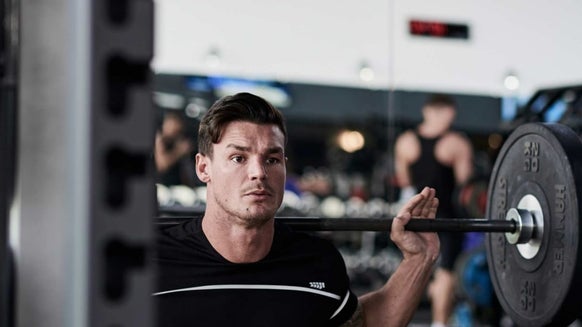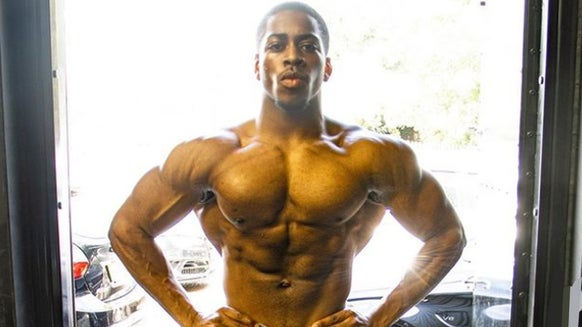As many of us are forced to change our training routine due to intermittent lockdowns this year, it’s worth remembering that you can still achieve some of the training results that you desire from home. Adapting simple calisthenic based exercises can significantly increase or decrease the demand on the target muscles, so surprisingly, you will still be able to provide your muscles with enough stimulus even without a barbell and plates.
Equally important to improving your strength and endurance is maintaining and improving your mobility to retain health in your joints. It is particularly important to mobilise antagonist muscle groups (along with similar training loads, both anteriorly and posteriorly) to avoid incurring any musculoskeletal complaints.
Home Chest Workouts Without Equipment
Working out your chest at home is a simple but challenging task, as you won’t have access to all of the fancy machines at the gym that allows you to hit the target muscles from all angles easily.
The majority of at-home sans-equipment chest workouts consist of push-ups, as this loads the main function of the pectoralis muscles – adduction.
1. Push-Ups
Start in the plank position, with your arms extended so that your hands are directly beneath the shoulder joint. With a straight line from your shoulders down to your ankles, lower your body by bending at the elbows, keeping them tucked to your side as you descend (instead of flaring your elbows out to the side). Then, push upwards, maintaining the same positions (straight body and elbows tucked to your side) until you reach the start position, then repeat.
2. Diamond Push-Ups
Start in the same position as the regular push-ups, but shift your hands so that they are closer together, with your index fingers meeting and your thumbs abducted to the side. Maintaining correct form, lower your body before pushing up to the start position. This variation is more triceps dominant.
3. Pike Push-Ups
Start in the same position as a regular push up, then walk your hands back until they are roughly above where your hips were. Your hips should now be in the air, forming the pike, and your hands will be just ahead of your head. It’s okay to have bent knees for this variation! Lower your weight by bending at the elbows, then push back up before your head meets the floor. This variation targets the triceps, deltoids and pectoralis minor muscles more – all of which are important if you wish to improve your pressing strength.
4. Incline Push-Ups
Somewhat of a regression of the regular push up, assume the push-up position but with your upper body propped up. The degree of regression (how much easier it is) will be determined by the incline – a steeper incline will be easier than something closer to parallel to the ground. Try using the stairs in your house or a chair and experiment with the degree of difficulty as you see fit.
5. Decline Push-Ups
This is more of a progression (i.e. more difficult than a regular push up), as more of the load must be managed by the muscles in your upper body, instead of being supported by your feet as the weight is shifted. Using the stairs or a chair, elevate your feet whilst in the push-up position. Continue to execute the push-up, as usual, ensuring you maintain a rigid and straight body throughout the movement. If you want to take the challenge further, try slowing down the reps, particularly on the descent!
6. Knee-supported Push-Ups
This can be used as a regression or as part of a superset. Start in the regular push up position, but allow your knee to support your lower body on the floor instead of your feet. Perform the push up as usual. You should be able to perform more reps than in a standard push up position, as your upper body will be supporting less weight. Add this variant on to the end of a set of a different variant of push-ups as a form of a superset or ‘pyramid’ set.
7. Plyo Push-Ups
Starting in the regular push up position, lower yourself to the ground in a controlled manner before explosively (whilst still maintaining proper form!) pushing yourself away from the ground. When done correctly, your hands should leave the ground for a brief moment (don’t worry if they don’t, you will still get similar results from focusing on generating the most powerful push-ups you can do). Make sure to absorb the impact as you land, before executing the next rep. It is highly likely that these push-ups will have the greatest carry over to your bench press strength in the gym, as power specific training is seldom performed for this movement. Quality over quantity is important here!
8. Staggered Push-Ups
Start in the bottom of the push-up position, as if you have lowered yourself from the normal starting position. Push up on only one side – this will result in your torso turning as you push up. Make sure you complete all of the reps for each side. This variation targets your pectoralis major muscles through a greater range of movement, as it allows you to load the full range of movement for adduction, one of the main functions of the muscle.
Home Chest Workouts with Weights
These exercises can be performed with any weights that you have available to you – dumbbells, kettlebells, barbells and even more creative tools like a large water bottle filled with sand or water etc. Be sure to manipulate the sets and reps scheme depending on the load that is available to you.
1. Bench Press
If you have access to a bench and a barbell with plates, then you’re set for this exercise. Plant your feet into the ground, with your bum, upper back and head all firmly on the bench. Un-rack the load, with your eyes underneath the barbell to start (if a family member or housemate can spot you then that’s great – safety first!).
Lower the barbell in line with your nipples, keeping your elbows tucked at around a 45-degree angle. Be sure to squeeze your shoulder blades together, create an arch in your lower back and engage your core for optimal control of the barbell. Press the load to the start position before repeating.
Recommended sets and reps: 4-5 x 8-15
2. Dumbbell Fly
Use a relatively light load for this exercise so that technique is not compromised and stress on the shoulder joint is minimised. Starting similar to the dumbbell bench press, lie on a supine bench and press the load up to the end of the range of motion to reach the starting position.
Abduct your arms, following the natural arch of the shoulder, until your hands/the dumbbells are parallel with the shoulder joint. Proceed to adduct your shoulders by contracting your chest until you reach the starting position again. Try slowing down the descent/eccentric phase to increase the challenge.
Recommended sets and reps: 3-5 x 12-20
3. Dumbbell Bench Press
Start seated at the end of the bench with the dumbbells rested on your legs. Lower yourself back onto the bench, using your knees to help shift the dumbbells up as you move. Plant your feet into the floor, with your elbows tucked at your sides and the dumbbells held with your wrists stacked over your elbow joint. Press the dumbbells upwards until they meet at the top, making sure to squeeze your chest and triceps at the end of the range of movement.
Recommended sets and reps: 3-5 x 10-15
4. Incline Bench Press
Adjust the bench so that the head is elevated at around 45-degrees. Perform the bench press following the same technique instruction as the flat bench. This variation results in more preferential activation in the deltoids and upper fibres of the pecs.
Recommended sets and reps: 3-5 x 8-12
5. Decline Bench Press
Using the same set up as the flat bench press, pull the pin and drop the head of the bench a few notches. Perform the exercise the same as you would a normal barbell bench press. Due to the fan-like attachment of the pec’s from the humerus to the sternum, preferential activation of the lower muscle fibres can occur with variations like this one, thus resulting in targeted development of the muscle as a whole.
Recommended sets and reps: 3-5 x 8-12
6. Close Grip Bench Press
Set up for the bench press, as usual, find your normal grip width, then move your hands in by one hand-width. Perform the bench press as described for the flat bench. This variation provides more preferential activation for the triceps, which contribute greatly to the strength of your bench.
Recommended sets and reps: 3-5 x 10-15
7. Floor Press
With a similar set up to the dumbbell bench press, start lying supine on the floor and with the dumbbells held stacked over your elbow joint. Press up towards the ceiling, bringing the dumbbells together until they meet at the top as you press them. Make sure to control the descent, as an uncontrolled descent may result in injury as the floor blocks full ROM for the pressing movement. This variant is good for developing strength and stability in sticking points, and of course is a great alternative if you don’t have access to a bench.
Recommended sets and reps: 3-5 x 8-15
8. Spiderman Plate Press
Using two weight plates of equal weight (or a single dumbbell), lie back onto a bench or the floor and hold the weight by actively squeezing it above the centre of your chest (think as if you are trying to crush the weight by pushing your hands together). Proceed to slowly press the weight up and down, maintaining a maximal or near-maximal squeeze throughout.
Recommended sets and reps: 3-5 x 8-20
Take Home Message
You don’t always need access to a barbell in the gym in order to make strength, size or endurance gains. Creativity and adapting your workouts is the key to ensuring you are able to make the gains you want, even when gyms are closed. If you’re stuck for time, you can change from sets and reps to max reps on each exercise within a given time frame, with a set amount of rest between exercises – this will be sure to accumulate plenty of metabolic and mechanical stress in the muscles, great for stimulating muscle fibre growth!








